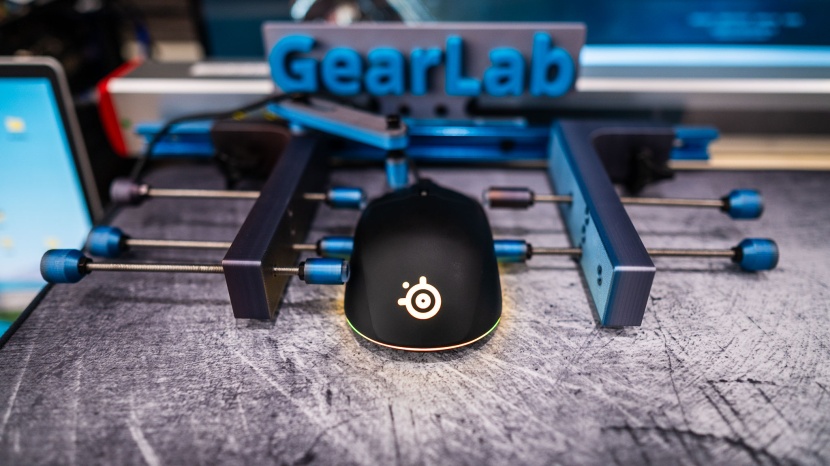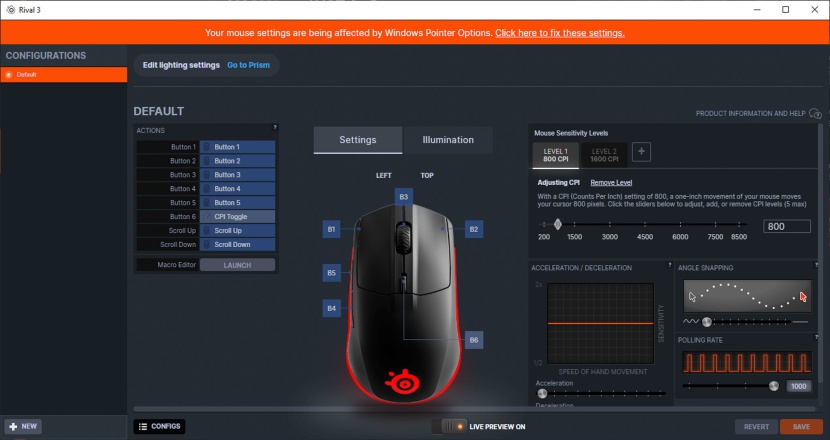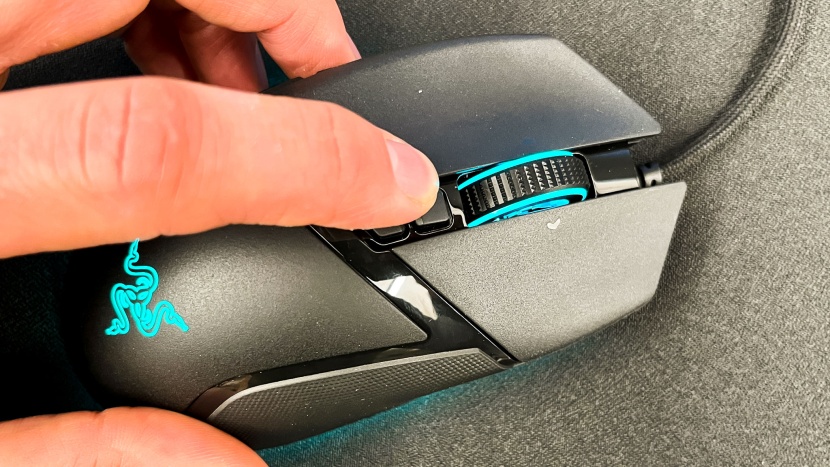Comfort
We have a panel of testers try each mouse for comfort. Each tester is categorized as having a small to extra-large hand. We take the scores and testing notes for each tester into consideration when assigning an overall comfort score. We specifically look for:
- How our hands rest on the mouse
- Curvature and angle of the mouse
- Grooves or thumb rests
- Ease of reaching buttons or scroll wheel
- General feel of the mouse and any pain points
Tracking and Precision
Larger mouse movements denote tracking, while smaller, more exact movements refer to precision. We score these by evaluating the sensor specs and by putting every mouse through its paces by rapidly hitting small click targets, drawing with the mouse pointer, and carefully observing screen lag against surface movement. We even do precision testing with specialized machinery to make controlled movements, which are then analyzed using dedicated mouse precision testing software.
We tested the tracking for every mouse on a standard cloth mouse pad. The first indicator of a mouse with poor tracking ability is when you feel the mouse moving across the pad but don't see the cursor moving in sync with it on-screen. It will often feel sluggish, or the pointer will appear jerky on the screen. One of our favorite ways to test mouse tracking is in a paint program where we attempt a variety of drawings, such as circular and square spirals and shapes with sharp and smooth angles, to see how the mouse keeps up. We perform tight, small movements (like spirals) and try to make straight, long, short, vertical, and horizontal lines to see how well the mouse tracks. We even attempt to draw the alphabet to see which mice render the most precise painted letters.
For our precision tests, we deploy a specialized linear slide testing rig to make precise machine-controlled movements with the mouse, which are recorded on the CPI/DPI Analyzer at www.mouse-sensitivity.com. The CPI test with the linear slide assesses a mouse's sensor accuracy in tracking physical movement and translating it into on-screen cursor movement. Note that manufacturers use counts per inch (CPI) and dots per inch (DPI) interchangeably when discussing precision, but we find CPI to be the more appropriate nomenclature. The CPI of a mouse determines how many pixels the cursor moves on-screen when the mouse moves one inch on the surface. Some sources may incorrectly use DPI (Dots Per Inch), which relates more to display resolutions.
Since the CPI of a mouse determines the sensitivity of cursor movements on-screen, a higher CPI means the cursor moves more pixels for each inch of physical mouse movement, making it feel more sensitive. Most people prefer CPI settings between 400 and 3,000. Although some gaming mice boast high CPI settings like 20000 or more, these aren't necessarily meant for regular use and don't guarantee accuracy. Think of the mouse sensor as a camera capturing the surface you move over; higher CPI means it captures more detail. However, accuracy isn't solely determined by the CPI range. Our scores are all based on Speed-Related Accuracy Variation (SRAV), which measures the variance in deviation error between the highest and lowest speeds for each CPI setting tested. This is significant when seeking predictability and accuracy in mouse movements on the mousepad.
Scroll Wheel
In this metric, we weigh the resistance and noise levels from the mouse's scroll wheel and any advanced features, such as 4D scroll wheels and infinite scroll modes. Mice without 4D or infinite scroll can only score a maximum of eight in this category, but they may still present well with smooth actuation or low noise. Lower resistance is typically less fatiguing but not necessarily everyone's preference. However, quietness is generally preferred, especially in shared office settings.
Programmable Buttons
This metric assesses each mouse's array of programmable buttons and the software side of the offering regarding the quality of advanced features and user experience. Mice with more buttons and advanced features, such as macro and key assignments, score higher in this metric than basic mice without them.
Surface Types
This is where we test the mice out on a variety of surfaces that they might encounter in homes, offices, and shops throughout the land. Our test surfaces were lined notebook paper, cardboard, a fiberglass desk, an uneven dining table, clear glass, a translucent tabletop, a highly polished tabletop, and a couch. All the mice did surprisingly well on mixed topography, with our polished white table test surface acting as the true test of the most all-terrain capable mice. No mouse in our review had much functionality on clear glass, though.
Conclusion
We trust that our detailed description of our comprehensive testing process for wired mice has been informative and valuable. By providing insights into our rigorous evaluation methods, we hope to assist you in making your next wired mouse purchase decision.




